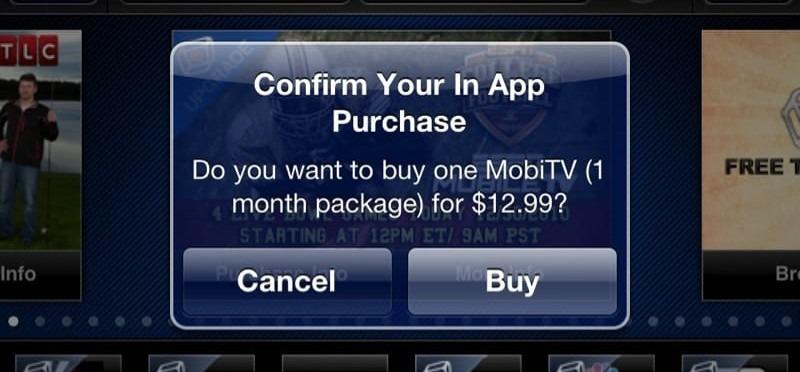How to market a mobile app
Make your iPhone or Android app stand out from the crowd with our guide to ranking highly on mobile app stores.
Mobile apps have become a multi-billion-pound business, with popular apps for iPhone and Android smartphones and tablets earning their makers millions of pounds.
And it isn't just large companies that have benefitted - small start ups, two-person partnerships and bedroom coders have all jumped successfully onto the mobile app bandwagon, turning their ideas into a profitable business.
The numbers are mind-boggling.
Since the launch of Apple's App Store, more than 130 billion apps for iPhone and iPad have been downloaded, earning app makers nearly $50 billion.
Today there are 2.2 million apps available to download on Apple's App Store and nearly $20 billion worth of sales was generated in 2016 alone.
There are other stores too, such as Google Play, meaning there is a wide range of routes to sell your app.
So, whether you started creating an app as a hobby and now want to turn it into a business or producing a money-spinning app is the goal all along, the key to becoming a success is effective marketing.
Marketing an app is highly competitive
With millions of apps fighting for attention, making your app stand out and getting it into the hands of the right audience is intensely competitive.
Creating an app can be done cheaply - you can code an app in your spare time with little money needed - but the real effort begins when marketing your new app.
Watch this: Learn about the Google Play mobile app store from Google, including advice on how to make money from your app:
The secret to marketing a mobile app is to know your market, identify trends and spot emerging app categories - a task not made easy by the constant churn of the UK app marketplace.
With new apps appearing every day, ranging from social media games and streaming music stations to flash-in-the-pan gimmicks that soar up the charts, it can be difficult to create the perfect app and ensure it stays visible.
The golden rule for marketing a mobile app is to promote it across as many relevant channels as possible - from social media and app review websites, to promotional websites and by using effective SEO techniques to ensure it ranks highly both on the App Store and on web search engines.
Doing this consistently over a lengthy period will give your app the best chance for success.
Setting a pricing strategy
You can charge for your app or give it away free to boost the number of downloads.
Even with charging, it can be hard to make enough money to recoup the time and effort spent in development, let alone generate money to live on.
While app pricing differs, you'll need to be aiming for at least 50,000 app downloads to make creating an app worthwhile.
Apps are a volume business, and very few command a premium price.
While many are around the £0.99 mark, or less than a fiver at most, the majority are free to start with and then charge for ‘in-app' purchases.

Giving an app away for free has the advantage of encouraging downloads – it’s risk-free for the customer – but it can be hard to decide how and where to introduce a fee.
Offer too little before asking for money for extra features via in-app purchases and customers will delete it.
Offer too much for free and there is little incentive for customers to pay for extra content.
Likewise, if you charge too much for extra content or functionality, some users will continue using the light, free version of your app forever without forking out for additional features.
Remember that it’s also possible to make money via in-app advertising but this require lots of time and effort post launch.
In general, when setting an app pricing strategy:
- Keep it freemium – A free-to-download app attracts more customers. You also don’t pay Apple or Google a fee for each download. If lots of customers download it but don’t end up paying, it hasn’t cost you anything in regards to the app stores it is on. Free apps are easier to drive up the app store charts too.
- Be generous – Freemium doesn’t mean free. Keep basic features and functionality free but charge customers for sensible and relevant additional features and functionality. This could be adding more tools to a creative app, more filters to a photography app or unlocking exercise or nutrition videos on a health and well-being app.
- Work out your ROI – This is the point at which your app will become profitable. Consider how many in-app purchases (or purchases of the app itself if you charge for it) are required to recover your development costs and generate a profit. Remember, 30% of your revenue will go to the app store, leaving 70% for yourself.
- Research the market – Look at apps that offer similar functionality. What pricing strategy do the highest charting apps adopt? Rank apps by ‘highest grossing’ as this will help you determine a pricing strategy that generates the most revenue.
Watch this: Google and Udacity offer a series of free videos that cover all aspects of marketing a mobile app. Watch the introduction and then follow along with the playlist of learning videos:
Pre-launch marketing
Successful app marketing begins before you even launch your app.
Decisions you make during development can make a huge difference to how much revenue your app generates.
- Get the name right – Choose a great name for your app as this will help it rank highly in app store searches. Make it catchy and try to include the most important keywords that potential users will be searching for. For example, a pension calculator app that’s called ‘Pension Calculator’ will rank more highly than ‘Retirement Calculator’ for someone using ‘pension calculator’ as their search query. Be careful not to infringe any trademarks in the name as your app may not be allowed into the store.
- Review competitor apps – Which apps rank highly in app store search results for your keywords? What features do they have and what keywords do they use to encourage downloads?
- Choose the right app category – As most downloads are driven by the app store’s Top Charts, it’s essential to pick one that lets your app rank highly in the Top Charts. Consider the size and popularity of each category, as not all categories are created equal. You may struggle to rank highly in a more popular category against well-known apps but if you can boost your rank here many more potential users will view and have access to your app than if it’s listed in a less-visited category.
- Design a compelling app icon – Your app icon is the first visual clue as what your app offers so make sure it’s eye-catching for users to click on after seeing it pop up in search results. Use a professional designer to create the app icon – amateurish icons will see potential downloaders skip over your app.
- Use great screenshots – Driving visitors to your app’s detail page within the app store is only half the battle. Once there, you need to convince them to download your app. Great-looking, informative screenshots of your app can help turn visitors into users.
Free or paid-for app marketing
Once your app has been accepted into the app store, promote it across as many channels as possible using either free or paid marketing.

Free marketing, often described as organic marketing, involves any method that results in downloads that you didn’t have to pay for.
With paid-for marketing, you pay for each individual download, or for advertising that results in downloads.
Unless you’ve a bottomless budget, it’s best to concentrate on free marketing, at least in the first instance.
This involves great PR and word-of-mouth marketing.
Do this as soon as your app launches to maximise the initial spike of interest new apps generate.
- Get featured on app review websites – Getting your new app reviewed by app review websites, tech news websites or by popular app bloggers can result a surge of downloads when you first launch. Aim for websites whose audiences are most likely to download your app. Contact bloggers and journalists to pitch your app, remembering to focus on how the app provides something they need. Look for opportunities to tap into blogs that cater for your target audience, perhaps by offering to write a guest blog or posting comments. Offering a free copy of the app as a competition prize may also help get coverage.
- Create great landing pages – People will either download your app from the app store’s detail page or from your website via a link or Google search, so make sure both work hard to convert visitors into users. Your app store detail page can’t be customised so has limited scope but your website landing page can be fully engaging and dynamic with screenshots, video or even an embedded web version of your app so users can try it before downloading it to their device. Be sure to include a clear call-to-action such as “Download our app now.”
- Use SEO to generate traffic – Ensure your landing pages are optimised for Google search terms and other search engines. Use the Google Keyword Planner to learn what keywords to target and create content on your website that ranks highly in search results.
- Make the most of social media – Encourage users to share and recommend your app to others. With millions of users, Facebook is the best social media channel to promote your app. Set up a Facebook page for your app with lots of detail, screenshots, video and call-to-action text. Join groups and promote your app there and set up your own group and invite others. Instagram, Twitter and Google+ are useful for promoting your app too.
- Encourage ratings – The number of ratings an app has and the how well rated it is helps determine its rank in app store search results. To make your app a success, you need as many 5-star ratings as possible. Ask for users to rate the app while engaging with it: either after a set amount of time using the app or after several uses.
Paid-for app marketing
A good way to make your app appear higher in the Top Charts is to run a short paid-for ad campaign to boost downloads. If your app is worthwhile, it will get good reviews and ratings and users will share it with their friends. This in turn helps keep it high in the app stores’ Top Charts without the need for further advertising.

- Social media advertising – Lets you target people specifically by demographics and interests, ensuring that the most likely users of your app will see your ads. With a Facebook ad campaign you can fine-tune the audience, control ad spend, and schedule, pause or stop it anytime you want.
- QR codes – Quick response codes are a good way to target potential users, getting your app in front of them instantly via a barcode that can be read by a smartphone camera. Add them to your website, business card and emails.
- Redeem codes – Giveaway codes are a good way to help boost initial download numbers. Try adding a redeem code to flyers or your business cards.
- Mobile advertising – Similar to banner advertising on websites, you can buy ads on mobile websites for your app. As mobile websites are served up to people using a mobile phone, it’s possible for the ad to link directly through to the app store for an immediate download.
- Use a mobile app marketing agency – If you’ve the budget, consider investing some marketing spend with a dedicated app marketing agency. Most offer a range of services and a wide network through which to promote your app.
Learn with Start Up Loans and boost your marketing skills
Want to market your start-up business? Check our free online courses in partnership with the Open University on effective marketing techniques.
Our free Learn with Start Up Loans courses include:
- Marketing in the 21st Century
- First steps in innovation and entrepreneurship
- Entrepreneurial impressions – reflection
Plus free courses on climate and sustainability, teamwork, entrepreneurship, mental health and wellbeing.
Disclaimer: The Start -Up Loans Company makes reasonable efforts to keep the content of this article up to date, but we do not guarantee or warrant (implied or otherwise) that it is current, accurate or complete. This article is intended for general information purposes only and does not constitute advice of any kind, including legal, financial, tax or other professional advice. You should always seek professional or specialist advice or support before doing anything on the basis of the content of this article.
The Start-Up Loans Company is not liable for any loss or damage (foreseeable or not) that may come from relying on this article, whether as a result of our negligence, breach of contract or otherwise. “Loss” includes (but is not limited to) any direct, indirect or consequential loss, loss of income, revenue, benefits, profits, opportunity, anticipated savings, or data. We do not exclude liability for any liability which cannot be excluded or limited under English law. Reference to any person, organisation, business, or event does not constitute an endorsement or recommendation from The Start-Up Loans Company, its parent company British Business Bank plc, or the UK Government.
Your previously read articles
Sign up for our newsletter
Just add your details to receive updates and news from Start Up Loans
Sign up to our newsletter


